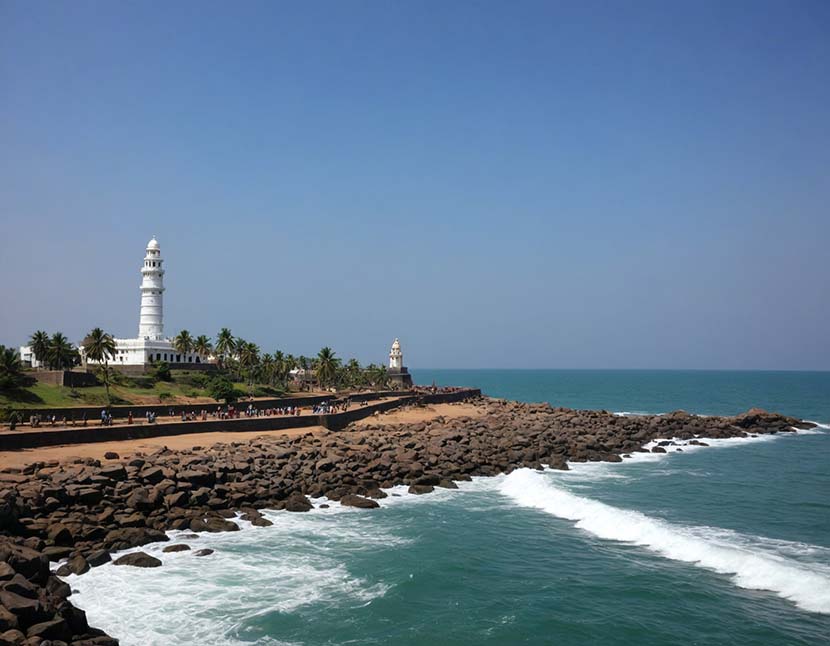Reading Time: 3 minutes
The Indian government’s policy initiatives to enhance spiritual tourism are a significant move toward promoting domestic tourism and establishing India as a global travel destination. Spiritual tourism, which has long been a cornerstone of Indian culture, is now witnessing unprecedented growth due to these strategic initiatives.
Growth in Spiritual Tourism Demand
Last year, there was a remarkable 40-50% increase in demand for spiritual tourism in India, with destinations like Varanasi, Ayodhya, and Tirupati seeing a surge in visitors. This increase can be attributed to the heightened interest in exploring the cultural and spiritual heritage of India. These cities, known for their historical and religious significance, have become hotspots for both domestic and international tourists seeking spiritual enrichment.
The PRASAD Scheme and Varanasi’s Transformation
A key driver behind the growth in spiritual tourism is the government’s PRASAD (Pilgrimage Rejuvenation and Spiritual Augmentation Drive) Scheme. This initiative aims to develop and beautify pilgrimage sites across India to provide better amenities, enhance visitor experiences, and promote these destinations globally.
The impact of the PRASAD Scheme is most evident in Varanasi, where the tourism sector has undergone a remarkable transformation. The completion of the Kashi Vishwanath Corridor project has been a game-changer, attracting an unprecedented 100 million visitors to Kashi Vishwanath Dham. The corridor project has not only beautified the area but also improved the infrastructure, making it more accessible and welcoming to tourists.
Anticipated Boost in Bihar and Odisha
Following the success seen in Varanasi, similar boosts in tourism are anticipated in Bihar and Odisha. The upcoming spiritual tourism corridors for Vishnupad Temple and Mahabodhi Temple at Bodh Gaya, along with comprehensive initiatives for Rajgir, Nalanda, and other sites in Odisha, are expected to draw large numbers of visitors. These projects will not only highlight the spiritual and historical significance of these places but also improve infrastructure and connectivity, making travel easier and more convenient.
Benefits for the Next Billion Users (NBU)
The government’s focus on enhancing spiritual tourism is also expected to benefit the large base of next billion users (NBU) who predominantly rely on buses and trains to access these spiritual towns. Companies like Ixigo are witnessing an increase in market share across various modes of transport, catering to the needs of these travelers. Improved infrastructure and better connectivity will make spiritual destinations more accessible to NBU, encouraging more people to explore these sites.
Economic and Cultural Impact
The economic impact of these initiatives is substantial. Increased tourism leads to more job opportunities and boosts local businesses, fostering economic growth in the regions. The cultural impact is equally significant, as these initiatives help preserve and promote India’s rich spiritual heritage, making it more accessible to the world.
Future Prospects
Looking ahead, the future of spiritual tourism in India seems promising. Continued government support and strategic initiatives will further enhance the appeal of spiritual destinations. This growth will not only attract more tourists but also promote India as a leading destination for spiritual tourism globally.
“The government’s policy initiatives to enhance spiritual tourism are a welcome move towards growing domestic tourism as well as making India a global travel destination. We saw a 40-50% increase in demand for spiritual tourism last year, for destinations like Varanasi, Ayodhya, and Tirupati. The government’s PRASAD Scheme has led to a remarkable transformation in Varanasi’s tourism sector, attracting an unprecedented 100 million visitors to Kashi Vishwanath Dham after the corridor project completion.
We expect a similar boost in tourism to Bihar and Odisha with spiritual tourism corridors coming up for Vishnupad Temple and Mahabodhi Temple at Bodh Gaya, along with comprehensive initiatives for Rajgir, Nalanda, and Odisha. We expect this to benefit our large next billion user (NBU) base which predominantly relies on buses and trains to access these spiritual towns, and where our market share continues to improve across modes of transport.” –Aloke Bajpai, Chairman, Managing Director & Group CEO, Ixigo
The government’s policy initiatives to enhance spiritual tourism are a welcome move towards growing domestic tourism and making India a global travel destination. With significant increases in demand for spiritual tourism and the transformative impact of the PRASAD Scheme, destinations like Varanasi, Ayodhya, and Tirupati are witnessing unprecedented growth. The focus on Bihar and Odisha, along with improved infrastructure and connectivity, will further boost tourism and benefit next billion users. Companies like Ixigo are crucial in supporting this growth, ensuring seamless travel experiences for all. As India continues to preserve and promote its spiritual heritage, the future of spiritual tourism looks bright, contributing to economic growth and cultural preservation.
The post India’s Government Policy Initiatives to Boost Spiritual Tourism Marking as A Catalyst for Domestic and Global Travel Growth appeared first on Travel And Tour World.

